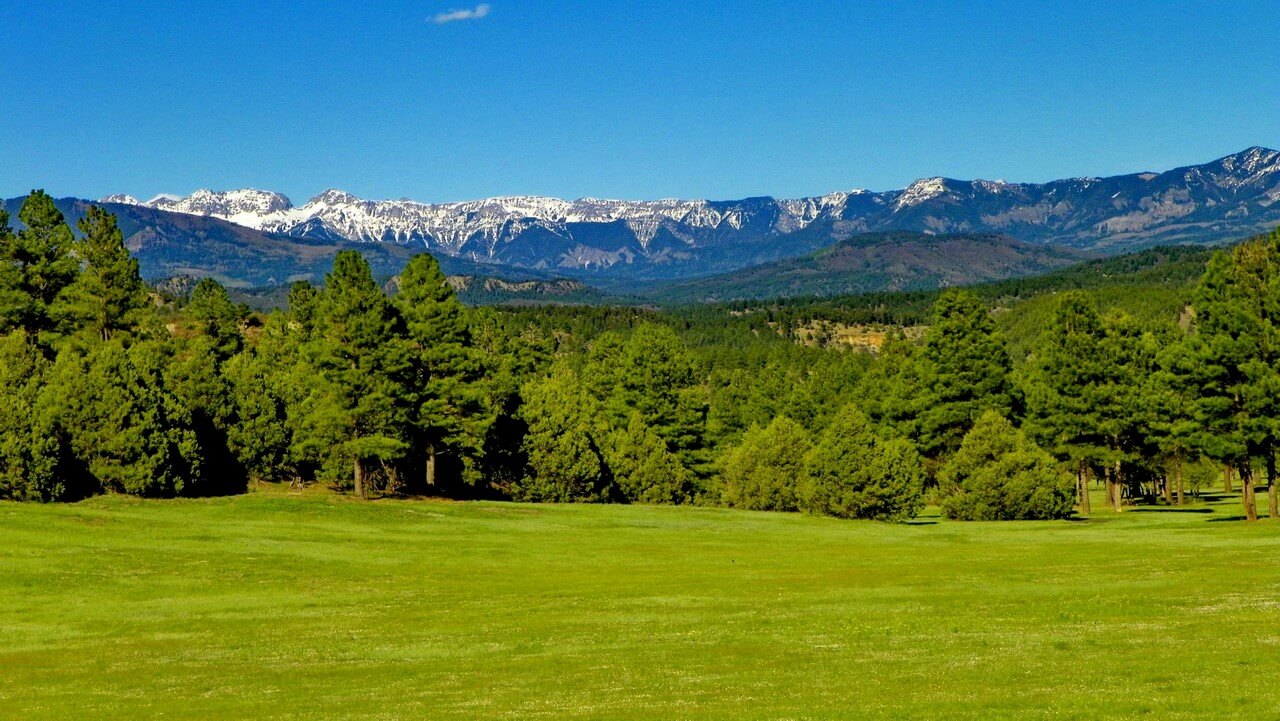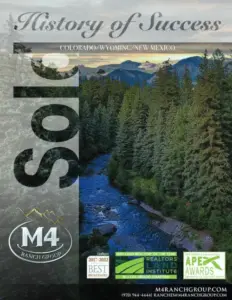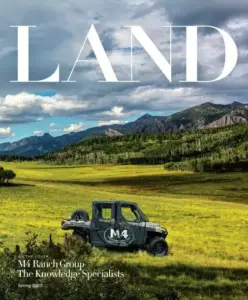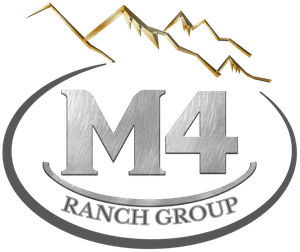With the recent passage of HB21-1233, Colorado has become a trendsetter in valuing land.
By establishing one of the nation’s highest return rates of purchase in exchange for protecting lands through conservation easements, the Centennial State has safeguarded unique ranches and their land-based legacy for landowners, outdoorsmen, agriculture and wildlife today—and far into the future. With HB21-1233, Colorado landowners can receive 100 percent of the diminution of values for deed restricting their properties.
A conservation easement is very much like a fingerprint, no two are the same. Each ranch and each region hold natural assets that are of value to the conservation world. Some ranches may be key development pieces while others are located in a migratory corridor for big game or the flight path for avian migration or they may be home to rare, native species. Natural diversity dictates a diversity of value and opportunities.
One of the most important parts of any conservation easement are the owners and their goals. In considering this time-tested conservation tool, it’s important for landowners to ask themselves: What do we hold dear? What open space values such as water quality or view sheds are important to us? What uses do we want to protect? Furthermore, what do we want our land to look like in 20 years, 50 years or even 100-plus years?
A conservation easement is enacted for perpetuity in partnership with a conservation entity such as a land trust. The partners share a desire to see the land and its natural assets protected.
Through a conservation easement, landowners either sell or donate their development rights. The land theoretically loses some of its market value because of the limitation on development. While development is limited, it is not completely prohibited and landowners have the opportunity to define the land’s future through their customized conservation easement.
Pertinent questions for landowners to ask themselves include: How many, if any, residences should be retained? How many options for future development such as additional homes, barns or other infrastructure, do we want to retain?
Through conservation easements, we often see ranching families protect their ability to live a western lifestyle by protecting their agricultural, hunting and recreational activities. They also protect their ability to manage their land and resources including conducting routine maintenance as well as improving land and aquatic habitat. While these day-to-day activities may seem trivial, they provide a solid, “guaranteed” blueprint for future uses
Once these protections have been identified and agreed on by the landowners and their conservation partner, the draft easement is completed. Then the land is valued using current market values coupled with the foreseen value reduction caused by the restrictions. The diminution in value varies greatly from property to property and from asset to asset.
Many times, we will see a 50 percent to a 65 percent diminution in the market value of ranches. These “losses “are recouped in two different ways.
For example, let’s consider a $1 million ranch with a 50 percent diminution in value. The loss of value equals $500,000. Of that overall diminution in value, 10 percent is a federal tax deduction, which in this case is $50,000, valued at the tax base of the ranch/landowners.
If the landowners are in the 37 percent tax bracket, their deduction from the $50,000 federal tax deduction is $18,500; the remaining $450,000 of the value diminution would be a Colorado State tax credit. Both the federal and state tax credits are dollar for dollar.
If the ranch/landowners own a Colorado entity and have a Colorado State tax burden these credits can be redeemed dollar for dollar. If the landowner does not own a Colorado business or entity with a state tax burden these credits are sold for $.85 on the dollar. In our example, the landowners will net an 85 percent return on the $450,000 in credits equaling $382,500.
The state credit is coupled with the federal credit at 37 percent, so the net return on a conservation easement for a $1 million purchase would be $401,000, reducing the original purchase price to $599,000. With those financial benefits, the landowners will still own the land and they will have protected the natural assets and intangible values for generations to come.
Currently, many of our clients leverage the value of money, working in partnership with entities such as American Ag Credit. Because the dollar value of a conservation easement reduces the loan principal, it allows land investors to establish a legacy property, protect its future—and enjoy decades of use with relatively little financial burden.
The best kept secret regarding the value of these conserved ranches is time. Today we see fewer large ranches. These ranches are often broken up and sold piece by piece for a higher value per acre.
We foresee that changing. In the not-so distant future, we see large and protected ranches holding a monetary value that rewards the intrinsic value of sustainability and improved wild spaces.
Conservation easements are often misunderstood. Thanks to visionary leaders investing in tomorrow and passing Colorado HB21-1233, Colorado is setting the mark for the nation while building a better tomorrow by protecting land value, wildlife habitat and a cherished lifestyle.
Dan Murphy
M4 Ranch Group
Broker/Owner








